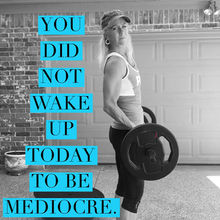How to Work Out with a Hurt Foot or Lower Extremity Injury
- Mary Timoney Ironman University Certified Coach
- Oct 6, 2023
- 5 min read
Hey athletes! If you have a foot, ankle, toe or any other lower extremity it might seem like the end of the world, especially to a triathlete. I have some good news for you-you don’t have to stop training and working out. You may need to modify things for a while, but you can still maintain your fitness- you just have to get a little creative.
If you are healing an injury or recovering from a lower extremity surgery (as I have done many times) you can still find ways to keep fit, maintain cardiovascular fitness, and build muscle. I am going to break it down for you and tell you exactly what I did after multiple foot surgeries over the years.
The first thing to keep in mind is that your body needs rest to heal. This probably means you are not bearing weight on your foot or ankle at this time, or maybe you are in a walking boot. You have to remember to let things heal and be kind to yourself through this process.
Weight training was a huge help to me both physically and mentally when I couldn’t walk on my foot. I would go to the gym often and park myself at the chest press machine, ask a trainer to get my weights and equipment for me, and stay in the same place for an hour or so. I could hobble around using the bench or crawling on my knees. I had an entire routine just at the bench with upper body and core work. For planks and push-ups I would stack the hurt foot over the healthy one and that seemed to work out just fine. I could also rest my shins on the bench and do planks and pushups that way.
I took advantage of the TRX Suspension Trainer as well. This piece of equipment is golden when you have an injury because you can kneel or stand on one leg for many of the exercises. If your injury permits you can put both feet in the foot cradles and get some great core work in while sculpting and toning your upper body for your swim. For things like flies and rows you can put your weight on one foot. I am telling you the TRX is a game changer for keeping up with your strength.
As far as cardio, the pool is your friend when you are non-weight bearing. (If you have a lot of stitches I recommend staying out of the water until 2 weeks after your stitches are out. This leaves time for the raw skin to heal over better and prevent infection.) Our swim coach used to tie my feet together with a band and pull buoy so that I could only pull in the water and that was fine by me. Getting in the water after your stitches are out makes you feel like an athlete again. There are tons of great drills you can practice (see my blog post about Swim Drills) in the pool that will give you some great cardio as well as upper body strength. If you are on crutches or the scooter, make sure you navigate the pool deck carefully and watch for patches of water so you don’t slip.
Another workout I did a lot when I couldn’t bear weight was the Tracy Anderson Method for Abs, Glutes, and Arms. She has multiple videos but here are the links to the ones I like:
This is a great way to work your legs and glutes without having to put weight on your feet. All you need is a mat and a chair. I didn’t want to lose all of the muscle tone in my legs and this workout made me feel like I could keep my legs strong for the 6 weeks on crutches. She has tons of free workouts that can be done on your knees on YouTube.
Lastly, Yoga was a game changer for me. I know that when you go to a yoga class there is a lot of standing and balance moves, but if you search for workouts that emphasize core and upper body you will find tons. It’s important when you are recovering to keep your flexibility and mobility alive, and yoga is a good way to do this. I like the ASANA Rebel app because there are a lot of workouts to choose from and most of them are only 25 minutes long. If you want more you can do 2 or 3 back to back. Modify as needed and bring standing moves to your knees if needed.
What about the heat if you are in a cast? The best thing you can do is take your workout into the air conditioning because you will sweat less in a cooler room. When it was hot and I didn’t want to fill my cast with sweat, I wrapped my cast in ice packs with velcro closures to keep my leg cooler in the heat. Sometimes I would stuff small ice packs into the top of the cast to keep things cooler, or put a thin towel in the sides of my case to help absorb sweat.
I am attaching a YouTube workout I created for those of you who need some inspiration to get moving even while you are injured. These will give you some ideas for things you can do until your injury is healed and you are back on your bike and running. If you are in a cast you will need to modify further as to not put weight on the casted foot. There are tons of modifications you can use if you just get a little creative.
Workout in a boot:
Boot Workout for When You're Injured
Remember that injury is temporary and the body will heal itself with rest. Think about healthy nutrition, good sleep (try for 8 full hours), and work on a positive mindset while you are healing. There are tons of healing affirmations you can find on podcast and music apps. I download these and fall asleep listening to them.
If you find you are having a hard day or feeling down about your injury, I recommend that you get moving in some way with the suggestions I have given you above. When you do get cleared to start training again, be smart and ease back slowly by building your base again. This too shall pass and you will be racing again my friend.
I hope you found these suggestions helpful. Shoot me a DM on social if you need to ask questions! I am always here for you.
Have you thought about a coach for your next iron distance event? Click the purple button below and fill out the short form for a FREE 15 minute chat with me about your race goals.
Mary Timoney
Ironman University Certified Coach
USA Cycling Coach
ACSM Trainer




































Comments